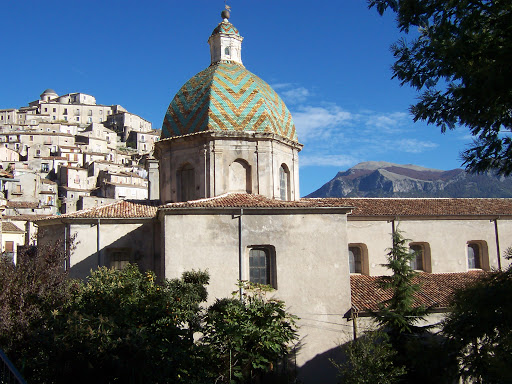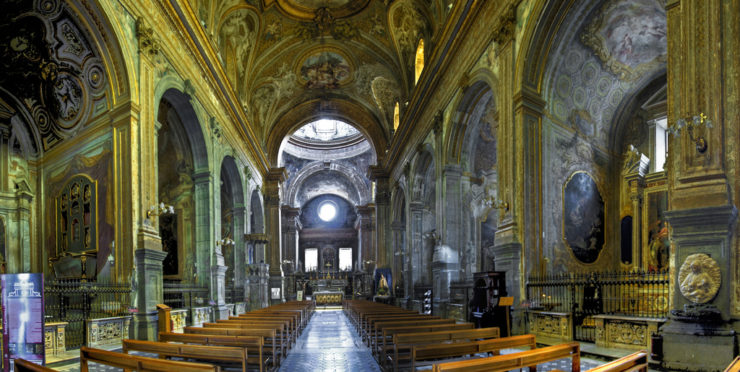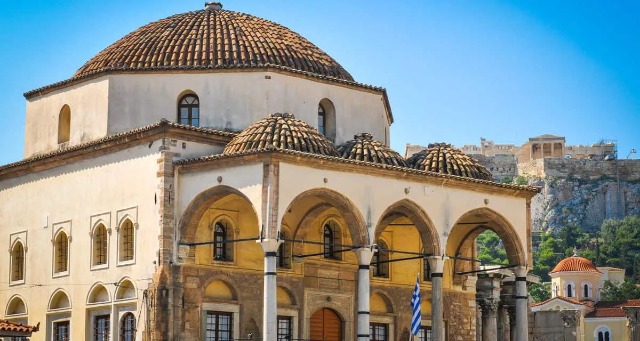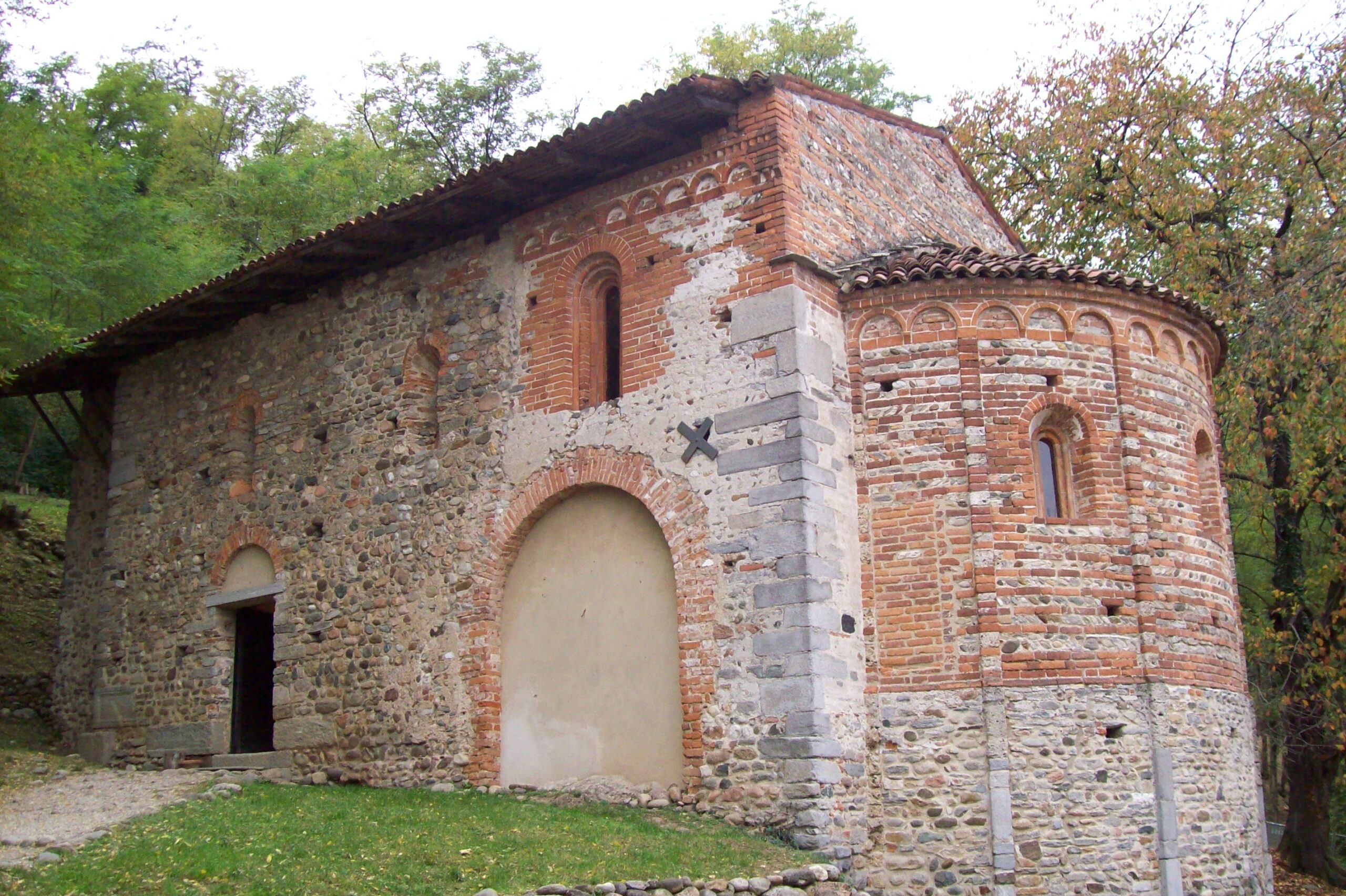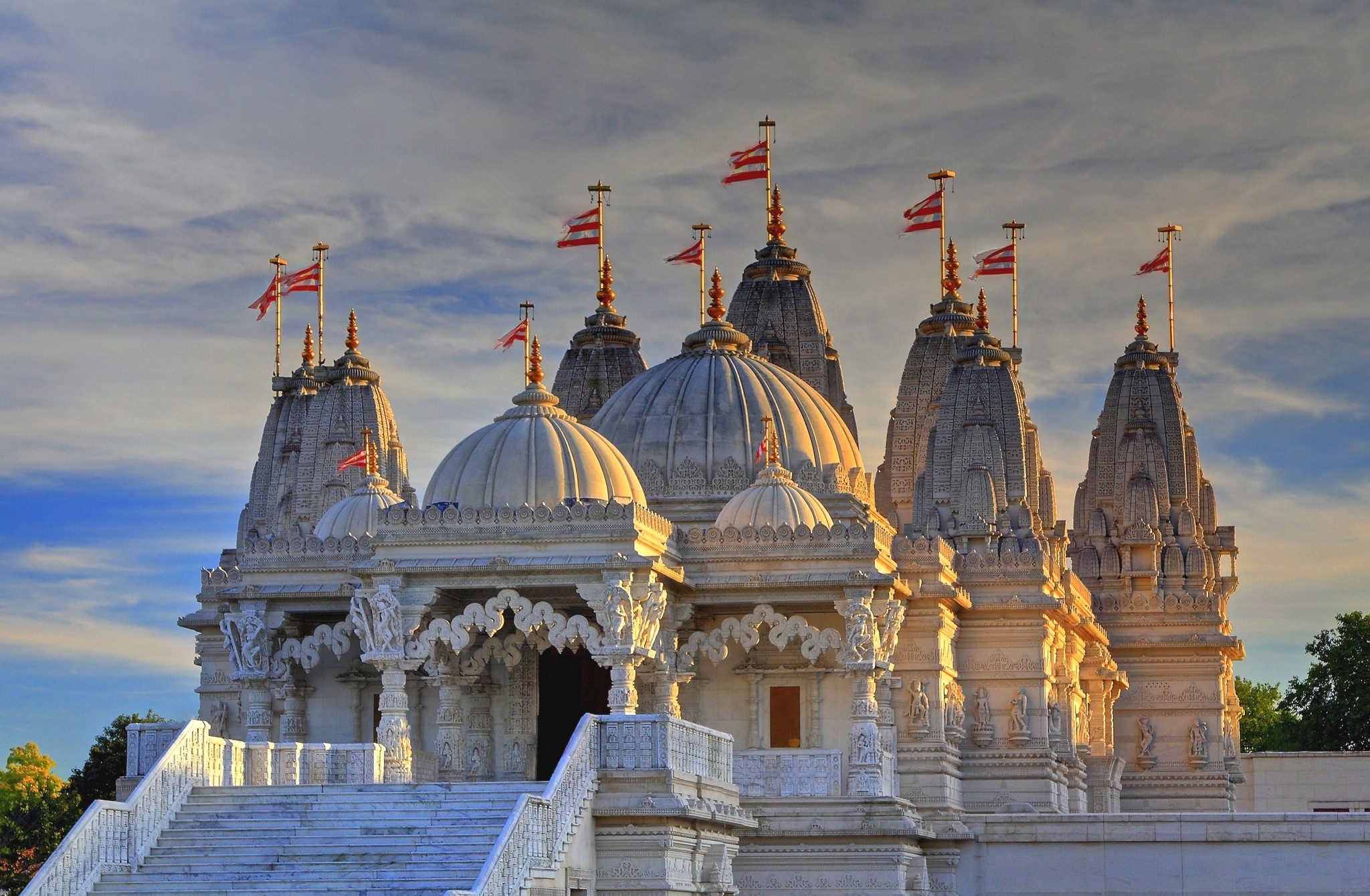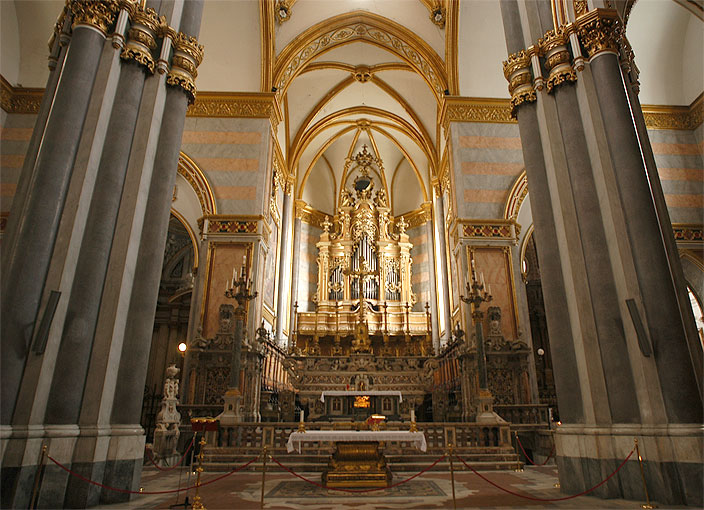The ancient core of the Collegiate Church stood outside the medieval city walls as a small suburban chapel in 1097. Given the architectural limitations of the structure and because of the growing number of worshippers, it was enlarged to a Latin cross plan with three naves at the behest of provost Don Giuseppe La Pilosella in the second half of the 16th century. Repeatedly remodeled until the first half of the 18th century, it assumed the title of collegiate church on February 3, 1737 by a bull of Pope Clement XII. Further restoration work began in 1732, during which late Baroque decorations commissioned from Donato Sarnicola gave the interior a majestic appearance, so that it is considered one of the highest examples of Calabrian Baroque. The bell tower (1817) and dome (1794) were covered with characteristic Campanian-style majolica tiles in yellow and green in 1862.
The facade, was completed in the 1840s in the neoclassical style. Divided into two levels divided by a string-course cornice consisting of triglyphs and metopes with classical symbolism, the lower level is subdivided by six Doric pilasters, the upper level, supported by four Ionic pilasters surrounded in the spaces by garlands, rises bearing on the pediment the coat of arms of the Spinelli family of Scalea.
Today the building retains its original Latin-cross plan, with in the aisles, five chapels on each side divided into bays surmounted by small domes, while the nave has a barrel vault overlooked by ten windows.
A ciborium and two praying angels placed at the ends of the high altar belong to the school of Pietro Bernini, while the Madonna of the Angels (1505) from the monastery of San Bernardino and placed on an altar in the right transept is by the famous southern Renaissance sculptor Antonello Gagini. A number of altarpieces of the 18th-century Neapolitan school are present. Notable authors and works include: Francesco Lopez, L’immacolata (1747), L’Addolorata, san Giovanni Battista e alcuni santi (1748) and to some of his sketches; Sarnelli family, Miracolo di San Francesco di Sales (1747), L’incoronazione della Vergine (1747) and Madonna del Rosario e alcuni Santi; Giuseppe Tomajoli, Death of St. Joseph (1742) and a St. John of the same period; and finally, by the Morano painter Lo Tufo The Virgin between Saints Sylvester and John the Baptist (1763) and The Souls in Purgatory. Among the wooden works, the choir (1792), the pulpit and some sacred cabinets made between the late 18th and early 19th centuries by Mario and Agostino Fusco are very valuable. At the bottom of the apse, coming from the monastery of Colloreto, is an early 17th-century polychrome marble pediment adorned with statues of St. Augustine and St. Monica with Mary Magdalene praying in the center, attributed to Cosimo Fanzago or Naccherino, to which two coeval putti are attached.
Also of great value is the sacristy.
Covered by a rare coffered ceiling of late 16th-century local manufacture belonging to the ancient sacred vessels, there is a 16th-century marble sacred oil case. Also enshrined are numerous relics of saints, including a stone from the Holy Sepulcher and a sandalwood footprint of St. Francis of Paola left on a rock on Mount Sant’Angelo in the act of blessing Calabria before traveling to France.
